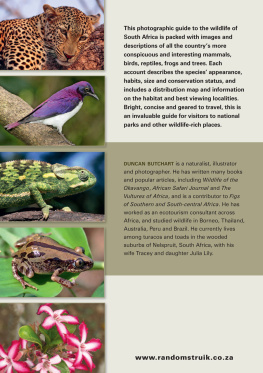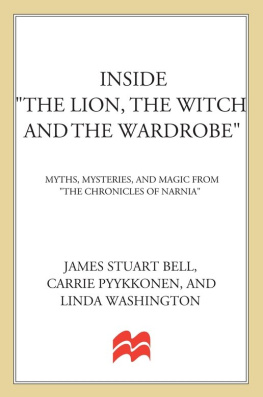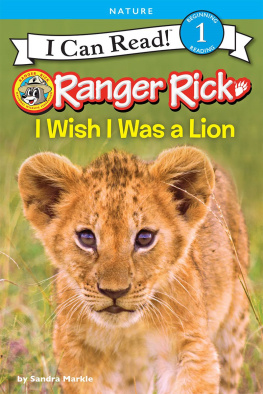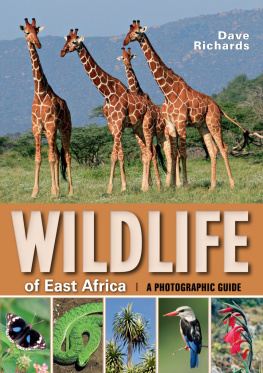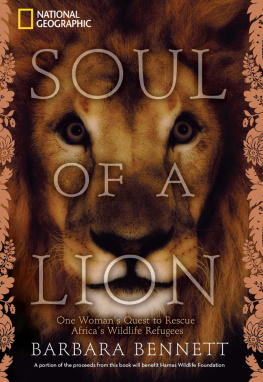The Imperial Lion
About the Book and Author
The Imperial Lion: Human Dimensions of Wildlife Management in Central Africa
Stuart A. Marks
In the 1950s biologists became alarmed by the plight of Africas wildlife. Since then they have sought to arrest its decline, but increasing competition between wild fauna and expanding human populations shows that protection alone has been inadequate. The conservationists position and strategies have been progressively eroded: large-scale game cropping schemes have failed to produce expected revenues, the consequences of the tourist industry have been unexpectedly detrimental, and educational programs have rarely convinced rural Africans to conserve resources.
Dr. Marks argues that the management and conservation of wild animals in Third World countries must include cultural as well as biological dimensions and that changes in human social systems will be necessary to sustain wildlife and the environmental processes. He describes indigenous attempts to manage wildlife and suggests new research initiatives that would lead to wildlife policies more in keeping with human development needs and with the realities of the rural countryside.
Dr. Marks is chairman of the Department of Anthropology and Environmental Studies at St. Andrews Presbyterian College and consultant to the Agency for International Development and to the UN Food and Agricultural Organization.
First published 1984 by Westview Press
Published 2019 by Routledge
52 Vanderbilt Avenue, New York, NY 10017
2 Park Square, Milton Park, Abingdon, Oxon OX14 4RN
Routledge is an imprint of the Taylor & Francis Group, an informa business
Copyright 1984 Taylor & Francis
All rights reserved. No part of this book may be reprinted or reproduced or utilised in any form or by any electronic, mechanical, or other means, now known or hereafter invented, including photocopying and recording, or in any information storage or retrieval system, without permission in writing from the publishers.
Notice:
Product or corporate names may be trademarks or registered trademarks, and are used only for identification and explanation without intent to infringe.
Library of Congress Cataloging in Publication Data
Marks, Stuart A., 1939-
The imperial lion.
(A Westview replica edition)
Bibliography: p.
Includes index.
1. Wildlife managementSocial aspectsAfrica,
Central. 2. Wildlife conservationSocial aspects
Africa, Central. I. Title.
SK575.C46M37 1983 333.9540967 83-21867
ISBN 13: 978-0-367-29301-7 (hbk)
For Stephan and jon and the endurance of their worlds.
 Contents
ContentsThis book is addressed to at least four different sets of readers: wildlife biologists and administrators, social scientists, development personnel, and students. Because I run the risk of irritating all four, I seize this opportunity to address each separately.
Wildlife biologists will see, I trust, that this volume is an assessment of their endeavors on the international scene and a contribution to the development and the integration of new conceptual models. Rather than review traditional wildlife methodology and principles, I try to show the broader political and economic matrices which support current international wildlife programs. Many of the institutional forms and concepts developed in Northern Europe for the conservation of temperate fauna are inimical to the circumstances of the tropics and their different ecological, political, social, and cultural constraints. As have other Northern Europeans in the tropics, wildlife conservationists have paid little attention to these different structures and the human plights underlying current ecological degradation. This volume is more than an update to Sir Fraser Darlings Wildlife in an African Territory (1960), although much of the territory and themes are the same. In the 1950s, both he and Sir Julian Huxley defined wildlife conservation within the context of human ecological problems. I share this orientation and justify my examination of theories about resources, social change, and small-scale societies on the following grounds. First, from the perspective of a wildlife ecologist, I have observed that, as a group, wildlifers have little empathy and understanding of social issues and the historical context of their programs. In todays world of specialized roles, that observation is understandable, yet regrettable, for wild-life survival is tied to diverse human interests and concerns at many different levels. Second, today wildlife is abundant primarily in marginal areas or along development frontiers where its survival is challenged by interrelated economic and political interests. The precarious conditions of all life on the frontiers provide wildlife managers an opportunity for developing viable alternatives to their more orthodox practices. Third, decisions affecting wildlife survival and the welfare of small-scale rural societies, often existing on the same terrain, are increasingly made in bureaucratic institutions far removed from the consequences of their actions. My contention is that the survival of biological resources, such as wildlife, is best managed at the local level. In this view, the welfare of indigenous peoples and the management of their environmental resources are linked directly. However, the successful merger of these two concerns depends primarily upon the quality of personnel and organizations involved to monitor circumstances and to evaluate the impact of policies. Perhaps one day wildlife social science will become as well recognized as any other field in the training and expertise of wildlife managers. If this monograph provides a tangible outline for some of the subject matter of this field, then a major objective will have been achieved.
To social scientists, who do not feel apologetic about their interests in a particular place, issue, or time, I confess my fascination with events in Central Africa and with its people and fauna. More important, I hope there is something of value in this monograph for such scholars to elucidate the human condition in Central Africa during this century. Human societies exist and evolve within environments from which are extracted resources to sustain human life. In my descriptions of the linkages between small-scale societies and their environmental resources, I follow some leads developed by scholars of economic and political history. Perhaps seeing some of their themes stated by someone whose interests lie outside their normal purview will prove sufficiently novel to convince them of the multidisciplinary efforts that lie ahead. In any event I recognize my debt. I have tried to digest the relevant historiography, and if it seems that I have taken liberty with some of their theories, I trust their correctives will become the beginning of a meaningful dialogue.
Developers will recognize, no doubt, the importance of social-environmental assessments and the necessity for the compatibility of planning between natural and artificially maintained environments. A major theme implicit throughout this monograph is that development is a totality which cannot be properly understood by its separation into convenient parts. Beginning in 1977, the U.S. Foreign Assistance Act had specific legislation attached which provided directives for the review of all projects with reference to their impact on the environment and natural resources of developing countries. Because wildlife is an important food resource in rural societies without suitable replacement at present, I hope wildlife programs will find their appropriate place within the search for new and sustainable programs for the people in the rural areas of Central Africa.






